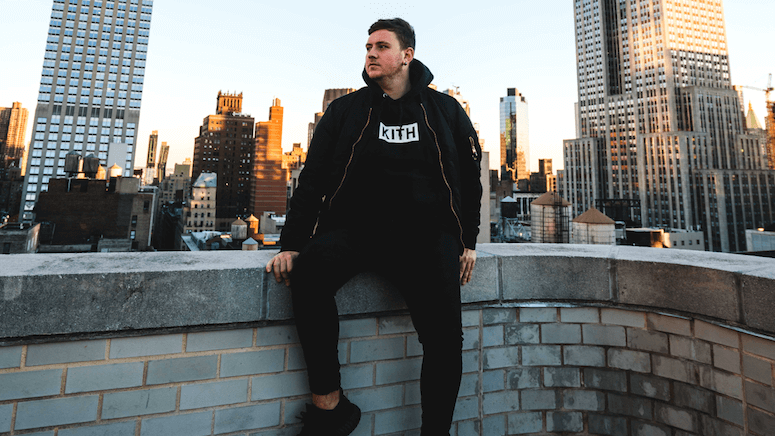How To Successfully Allocate Ad Spend Across Social Media Platforms
Which social media channels should we be spending our money on?

Tim Hyde is a 25-year-old award-winning marketer who specialises in social media marketing and has spent more than £50million on performance advertising.
‘Employee of the Year’ at LADbible at just 19, Tim was instrumental in the growth of Lad Bible’s Facebook Page from 1.8 Million to 10 Million Likes in just 10 months, increasing daily traffic from1 Million to 5 Million each day.
He became Head of Campaigns for Social Chain, devising, pitching and executing effective Social Media campaigns for brands such as Eurosport, Ford, ASOS, Puma and Spotify and pioneered the top nine most engaged live streams by a brand ever.
Now with his own Social Media Marketing agency, TWH Media, he explains how to successfully allocate ad spend across social media platforms. Times have changed, and social media platforms have changed, so is it time for s fresh look?
How much experience do you have in this area?
TH: I would say I have managed add spend approaching £50,000,000 across about 100 clients, with the lions share being spent on Facebook and Instagram advertising
That’s a lot of noughts and a lot of responsibility. How does it work and where did you start?
TH: It really depends on and varies from client to client. Some have a really clear idea in mind, typically when they have previously worked with an agency.
They have more insight into how things work and the best way to do things. Others are starting from scratch and have no idea and so we start from scratch with them.
Phase one is setting objectives or the ‘digital plumbing’, which is making sure everything is tracking and set up correctly.
From an advertising perspective, I usually look at the low hanging fruit and make small improvements that have a big impact.
Largely based on whatever they have been doing previously, a balanced and effective retargeting funnel can get them going with a couple of easy wins. From here, and once you’ve got a bit of a platform, you can start to compare and contrast.
Is there one dominating trend we all should apply to our advertising strategy?
TH: Yes, for me it is diversification of spend and I really believe that it is going to be one of the dominating topics throughout the decade.
Facebook + Instagram and Google’s ad network have dominated and, in the future, will be challenged as there will be spend going to other platforms such as TikTok, SnapChat and Pinterest. I personally think we will also see Apple ads.
I’m fairly confident this is one of the reasons why they made the iOS 14 changes, in preparation for launching their own ad platform, so they will be able to target the iPhone or iOS users and it's going to be incredibly valuable. Watch this space.
Is it risky spreading your budget across a number of channels?
TH: Not if you understand what you are doing. One aspect of your diversification of spend is about mitigating risk; you don't want to be solely reliant on one channel, even if it is your best performer.
It is really important to understand where and how those channels work together. For example, Google is very much an intent based platform. It is phenomenal for remarketing and really effective if you have already generated brand awareness and someone searches a specific term or your brand name.
For this aspect, it is arguably the best marketing tool available. But it is very limited when it comes to scaling. One of the ways you can scale that channel is to increase your budget elsewhere, to make that pool of people or potential customers much bigger.
Do you need to approach each channel differently to maximise your impact?
TH: It’s more about your approach being appropriate rather than different. You need to hone your style and your language to each platform as diversification of spend optimises the other ad platforms.
If you use TikTok, your creative will need to be more tongue in cheek and has have a ‘native’ editing style or it will stick out like a sore thumb. Facebook & Instagram can be considered more premium and even more so for YouTube as your creative has to be longer and of a certain calibre.
Google is mainly copy based so allows you to hit people in lots of different, creative ways on different platforms and for me, that's one of the keys to diversification of spend
How do you identify or quantify the value of your sales when using multiple channels?
TH: This boils down to understanding how each platform attributes sales. The big change with iOS 14 is that Facebook has gone from, at its highest, a 28-day view down to only a one-day view and seven day click. This means that if someone clicks on an ad and then purchases within seven days, you'll have an attributed sale.
However on TikTok and even Pinterest, the attribution windows are much shorter, so if your return on ad spend on Facebook is 3.5 but on TikTok is 1.5, then within the same attribution window, TikTok might be out-performing Facebook because on that last click basis, that performance is quite strong.
Understanding the parameters of what success is on different platforms is really important.
How do you rate influencers and influencer marketing?
TH: This is quite a loaded question but in summary, ad spend can be extremely effective on influencer marketing if it’s used as part of an upper funnel awareness strategy and its success isn't measured solely by an uplift in sales.
The use of ambassadors or other channels distributing your media can be hugely powerful and definitely needs to be considered as part of your online marketing mix and incorporated within your paid spend.
Thanks for signing up to Minutehack alerts.
Brilliant editorials heading your way soon.
Okay, Thanks!


